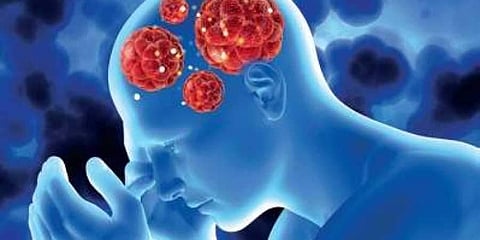

A team of researchers at the Indian Institute of Technology (IIT) Madras has found energy deficiency in certain cells in the human brain to be a major cause for Parkinson's disease, a neurodegenerative disorder.
According to the team, it is known that Parkinson's disease is caused by the loss of dopaminergic cells (located in the central nervous system) in substantia nigra pars compacta (SNc), a key component of the ventral midbrain. "It is quite remarkable that loss of neurons in a small nucleus like SNc can have wide-ranging, devastating effects in all the four major domains of brain function -- sensory-motor, cognitive, affective and autonomous," V. Srinivasa Chakravarthy from the institution said in a statement. "The sequence of the three computational studies suggests that metabolic deficiency within the basal ganglia circuit is the common underlying factor at the subcellular, cellular and network level in Parkinson's disease. Thus, we have a reasonably comprehensive theory of the pathogenesis of Parkinson's disease," Chakravarthy added.
For the study, published in the International Journal of Scientific Reports, the team developed a computational model that showed that energy deficiency might be a major cause of SNc cell loss in Parkinson's disease. At the subcellular level, metabolic deficiency leads to changes like including alpha-synuclein aggregation, reactive oxygen species production, calcium elevation, and dopamine dysfunction, which are characteristic subcellular changes in Parkinson's disease, the study indicated.
This research aims to build a simplified model of the whole brain and use it to develop applications in medicine and engineering, the team said. Parkinson's disease is the second most prominent neurodegenerative disease around the globe after Alzheimer's disease.
